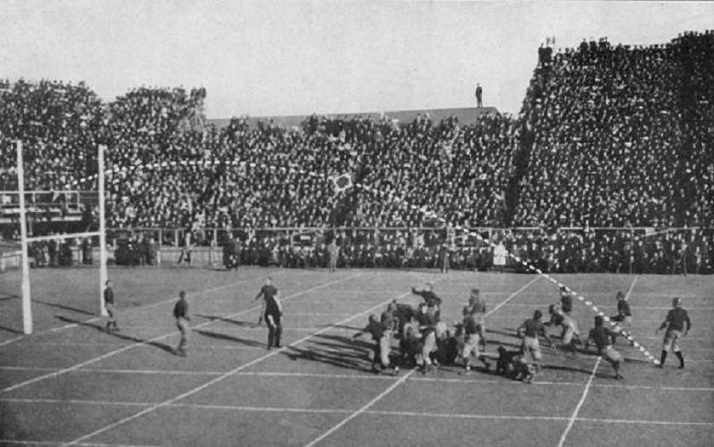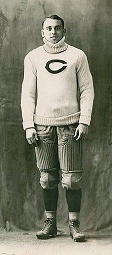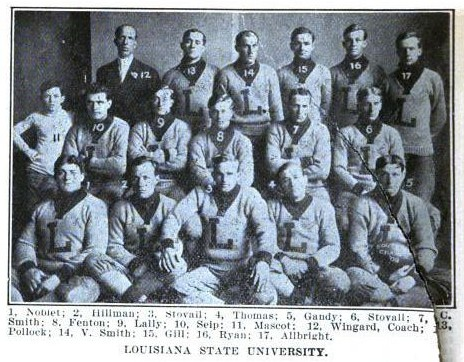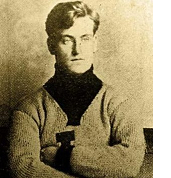


| Bowdoin (5-4) | 5-0 | |
| Maine (3-4) | 16-0 | |
| Bates (4-4) | 18-0 | |
| Williams | 10-0 | |
| Springfield (3-4-1) | 44-0 | |
| at Navy (9-2-1) | 6-6 | #8 |
| Brown (5-3-1) | 6-2 | #12 |
| Carlisle (10-2-1) | 17-0 | #6 |
| Dartmouth (6-1-1) | 6-0 | #7 |
| at Yale (7-1-1) | 4-0 | #3 |

| West Virginia (5-3) | 6-0 | |
| Ursinus (7-3) | 30-0 | |
| Bucknell (3-5-2) | 16-0 | |
| Villanova (1-6) | 11-0 | |
| Penn State (5-5) | 6-0 | (#26-34) |
| Gettysburg (6-2) | 23-4 | |
| Brown (5-3-1) | 12-0 | #12 |
| Carlisle (10-2-1) | 6-6 | #6 |
| at Carnegie (3-7) | 25-10 | |
| Lafayette (6-2-2) | 34-4 | #20 |
| at Michigan (5-2-1) | 29-0 | #16 |
| Cornell (7-1-1) | 17-4 | #5 |
| Purdue (4-3) | 39-0 | |
| Indiana (3-4) | 29-6 | |
| Illinois (5-1-1) | 11-6 | (#26-34) |
| Minnesota (3-2-1) | 29-0 | #18 |
| Cornell (7-1-1) | 6-6 | #5 |
| at Wisconsin (5-1) | 18-12 | #9 |
 Amos Alonzo Stagg's Chicago Maroons won a retroactively selected national championship for the 1905 season behind the play of quarterback Walter Eckersall, a hall of famer and 2-time consensus All American.
His replacement
at quarterback, Walter Steffen (pictured), also a hall
of famer and consensus All American, led this 1908 team. Steffen was a very good open field runner, totaling
156 points in his 3 years. A much better student than Eckersall, Steffen
became a judge in Chicago, and at the same time commuted to Pittsburgh
as Carnegie's head coach for 18 seasons. He was extremely successful at
Carnegie, eventually building them into a national power out of nowhere
and finishing 88-53-6 there against very tough schedules.
Amos Alonzo Stagg's Chicago Maroons won a retroactively selected national championship for the 1905 season behind the play of quarterback Walter Eckersall, a hall of famer and 2-time consensus All American.
His replacement
at quarterback, Walter Steffen (pictured), also a hall
of famer and consensus All American, led this 1908 team. Steffen was a very good open field runner, totaling
156 points in his 3 years. A much better student than Eckersall, Steffen
became a judge in Chicago, and at the same time commuted to Pittsburgh
as Carnegie's head coach for 18 seasons. He was extremely successful at
Carnegie, eventually building them into a national power out of nowhere
and finishing 88-53-6 there against very tough schedules.| Harvard 9-0-1 | Pennsylvania 11-0-1 | Chicago 5-0-1 | ||||||||||||||||||||||||||||||||||||||||||||||||
|---|---|---|---|---|---|---|---|---|---|---|---|---|---|---|---|---|---|---|---|---|---|---|---|---|---|---|---|---|---|---|---|---|---|---|---|---|---|---|---|---|---|---|---|---|---|---|---|---|---|---|
|
|
|
||||||||||||||||||||||||||||||||||||||||||||||||

| New Orleans Gym Club | 41-0 | |
| Jackson Barracks (New Orleans) | 81-5 | |
| Texas A&M (3-5) | 26-0 | |
| Rhodes | 55-0 | |
| at Auburn (6-1) | 10-2 | (#26-34) |
| Mississippi State (3-4) | 50-0 | |
| Baylor (3-5) | 89-0 | |
| Haskell (3-5-1) | 33-0 | |
| at Louisiana Tech (4-3-1) | 22-0 | |
| at Arkansas (5-4) | 36-4 |
 The
National Championship Foundation has been the worst selector so far
(1901-1907), but they've topped themselves with their selection of
10-0 Louisiana State
to share the 1908 title with Penn (but no Harvard! Did they operate
completely free of research?). Now yes, LSU had a perfect record, and
Harvard, Penn, and Chicago did not, but the problem is that there
are half a dozen teams with perfect records every single season
(more if
you include all of the most minor schools). Kansas, for example, went
9-0 in 1908, and against a more credible schedule (which isn't saying
much). The thing is, the 3 contenders discussed above played schedules
so far beyond LSU's that it is like comparing FBS teams to a division
II team.
The
National Championship Foundation has been the worst selector so far
(1901-1907), but they've topped themselves with their selection of
10-0 Louisiana State
to share the 1908 title with Penn (but no Harvard! Did they operate
completely free of research?). Now yes, LSU had a perfect record, and
Harvard, Penn, and Chicago did not, but the problem is that there
are half a dozen teams with perfect records every single season
(more if
you include all of the most minor schools). Kansas, for example, went
9-0 in 1908, and against a more credible schedule (which isn't saying
much). The thing is, the 3 contenders discussed above played schedules
so far beyond LSU's that it is like comparing FBS teams to a division
II team. | 1) Billingsley (math system) | 4.34 |
| 2) Parke Davis | 4.28 |
| 3) Houlgate (math) | 4.2 |
| 4) Helms | 3.9 |
| 5) National Championship Foundation | 3.2 |